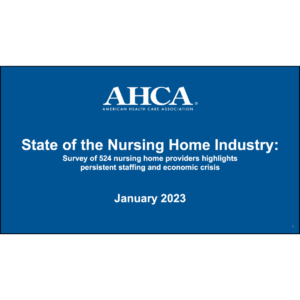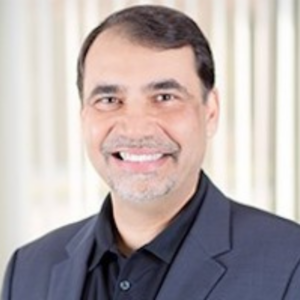How to Choose the Best Workforce Management Software for Your Facility
In the evolving senior care landscape, senior care communities must adapt to address shifting workforce management needs. With increasingly versatile workforce management platforms, senior care communities gain valuable tools to tackle emerging challenges head on. However, as with any other technology advancement, selecting the optimal workforce management software tailored to the community’s specific needs is critical for maximizing returns on investment.
The Current Role of Workforce Management Software

Sergii Opanasenko, founder of Greenice
Sergii Opanasenko, founder of web development agency Greenice, has developed solutions specifically for the senior care industry. He explains that in light of the current workforce crisis and its staff shortages and high turnover, workforce management software plays a vital role. “Providers are turning to technology to streamline recruitment, onboarding, and retention processes,” Opanasenko explains. “Compliance and cost optimization are also top priorities, driving efficiency gains through workforce management platforms.”
He notes that workforce management platforms have become indispensable in today’s senior care landscape. “They help providers source talent, accelerate onboarding with digital training, optimize scheduling, and ensure accurate payroll, all while maintaining strict compliance standards,” he says. “That’s why for many organizations it’s a priority investment. For instance, one of our clients, a home care agency, has spent 5 years developing a custom workforce management platform.”
Workforce management platforms offer several benefits to senior care communities. They support faster hiring and can help reduce the time it takes to fill positions. They also allow for a streamlined onboarding and training process, as well as efficient scheduling and workforce optimization. The platforms allow for accurate time tracking and payroll management, too. They provide organizations with valuable data and insights into staffing trends and costs for workforce optimization, and mobile access keeps staff connected and informed.
Workforce management platforms also offer several distinctive benefits to staff, including easier job searching and a faster transition into senior care roles, thanks to digital training. The platforms give staff greater scheduling flexibility and control, as well as simplified reporting and payroll tracking.
How Senior Care Communities Can Choose the Best Workforce Management Software
According to Opanasenko, there are two essential steps in choosing the right workforce management platform. To start, a community needs to establish clearly defined requirements. “It’s important to understand what you need and want before you go searching for the perfect solution,” he says. “To collect your requirements, start with your general goals, bottlenecks, and current processes.”
While defining your requirements is important, Opanasenko feels that communities gain the most clarity about what they want and what they don’t want only once they start using a system during a trial run. As a result, it’s important to be prepared for the fact that the first solution you try probably won’t be the solution you ultimately decide to purchase.
When exploring potential workforce management platforms, Opanasenko encourages communities to look for a partner, rather than simply looking for features. “The best workforce management platform isn’t the one with the most bells and whistles. It’s the one that understands your specific needs, your staff, and the unique rhythm of your community,” he explains.
He also highlights the importance of choosing a platform that makes everyone’s job easier, not just those in your human resources department. He encourages communities to look for simple interfaces, intuitive features, and stellar support. “If your staff isn’t happy using it, it doesn’t matter how powerful it is,” Opanasenko adds.
He outlines several read flags senior care communities should be on the lookout for when exploring workforce management systems:
- A one-size-fits -all approach in which a vendor seems uninterested in tailoring the platform to the community’s specific needs and workflows.
- Limited functionality and features that are critical for senior care, such as specialized scheduling for different care levels or compliance tracking.
- Hidden costs or complex pricing, such as unexpected fees, which make it difficult to compare a platform’s cost with other options.
- Poor customer reviews or support, which can indicate potential problems with responsiveness.
- Limited scalability, such as a platform that can’t grow with an organization if you expand services or add new locations.
- Dated technology or lack of robust security measures to protect employee and resident data.
Strategies to Ensure a New Workforce Management Platform Is a Success
Selecting and implementing a new workforce management platform can be a significant process, and it’s not always one that goes smoothly. Opanasenko recommends that senior care communities involve their teams from the outset, including getting input from managers, human resources staff, and frontline caregivers while selecting a platform. “This builds buy-in and ensures the platform addresses real needs,” he says.
He also notes that it’s important to choose a vendor that offers robust training and support. “Invest time in training all users, and have a dedicated internal ‘champion’ to help with adoption,” he says.
When implementing a new platform, start by focusing on core features, like scheduling and timekeeping. Roll out additional features slowly, which gives your entire team time to learn the platform and adjust to the change. “Measure the platform’s impact with clear metrics, like saved time, reduced errors, improved staff satisfaction,” Opanasenko suggests. “Share these wins to sustain excitement.”
Finally, set up channels to collect ongoing user feedback. Use that feedback to make adjustments to maximize the improvements the platform delivers to your community.
The Future of Workforce Management Platforms
Opanasenko believes that workforce management platforms in senior care will become more intelligent and integrated. “AI will drive predictive scheduling and staffing recommendations, while platforms may evolve into ‘caregiver marketplaces’ for flexible work,” he predicts. “Wearables and IoT devices will enhance monitoring and safety, feeding data back into the platform. The focus will be on the human side too, with features for personalized training, stress management, and even matching caregivers to residents based on personality.”
Today’s workforce management platforms already offer robust support and numerous benefits to senior care communities and their staff. They can help communities navigate staffing challenges and have become quite essential. “While technology can feel overwhelming at times, embracing workforce management solutions isn’t optional for care providers–it’s the key to survival,” says Opanasenko. “Caregivers who harness these tools will not only streamline their own work but ultimately deliver better, more sustainable care for the seniors they serve.”

Paige Cerulli is a contributing writer to i Advance Senior Care.
Related Articles
Topics: Facility management , Featured Articles , General Technology , Operations , Risk Management , Staffing











